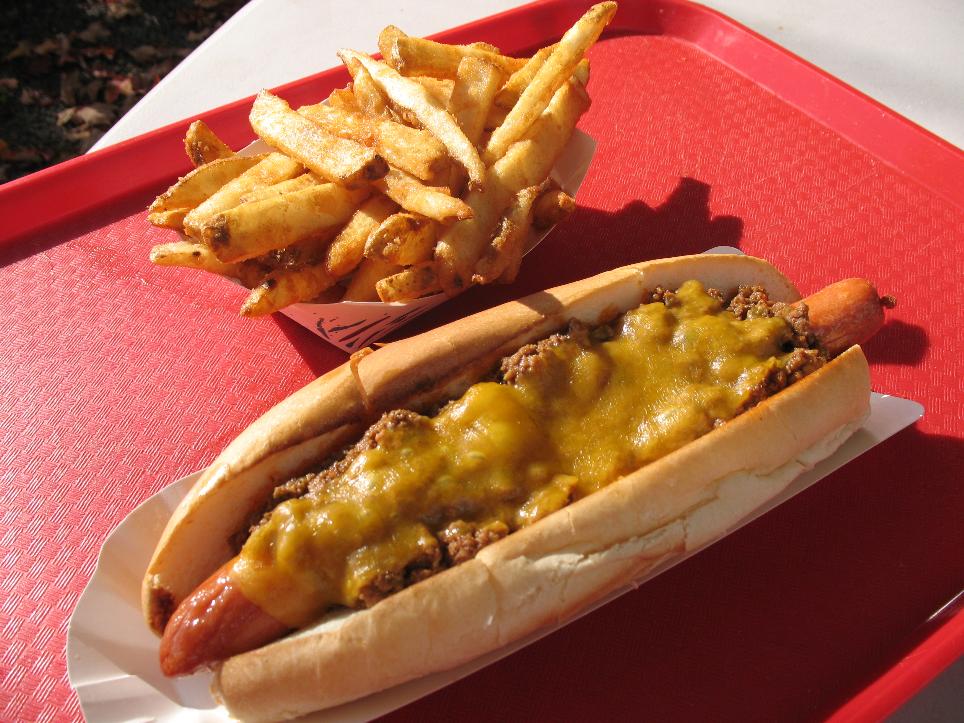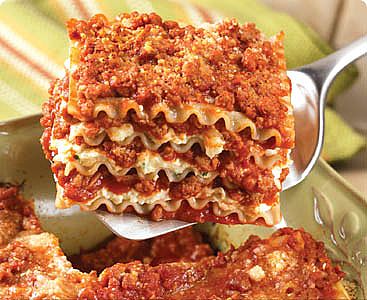Why Sugar Makes Us Fat:
POP QUIZ: WHAT DOES THE BACKSTREET BOYS' MILLENNIUM ALBUM HAVE IN COMMON with high-fructose corn syrup? No, not the saccharine overload. Millennium was the topselling album in 1999, the same year HFCS consumption peaked in the United States, according to the USDA. You might assume that obesity peaked then too. After all, high-fructose corn syrup is the devil's candy, driver of the obesity boom and the cascade of health problems associated with our national obesity epidemic, from diabetes and metabolic syndrome to heart disease and sleep disorders.
Or maybe not. Since 1999, Americans have continued to pack on pounds; now 67 percent of U.S. adults are overweight or obese, the World Health Organization reports. The theory that HFCS was driving our belly bulge—the "HFCS hypothesis"—arose in 2002 and grew in influence for years, but it's currently under attack. As the new thinking goes, it's misguided to blame HFCS for making us fat. Many culprits contribute to obesity, including all kinds of sugar and maybe even artificial sweeteners. "People are still on high alert against HFCS," says sports nutritionist Chris Mohr, Ph.D., R.D. "That's a good thing. But to lose weight, you have to watch your intake of all sugars." That's easier if you understand why you crave sugar and how your body reacts when you cut down on it. Spoiler alert: You're going to like the results. This is the simplest way to lose weight you'll ever try.
MAYBE YOU THINK THIS ISN'T ABOUT YOU. Maybe you hardly ever touch a sugar bowl or rip open a white packet. Doesn't matter: Just eating and drinking a typical American diet, we suck down about 23 teaspoons a day of "added" sugar—sugar that doesn't occur naturally in food. That's 367 calories' worth, including roughly 183 calories from cane and beet sugars and 136 from HFCS. The weekly total: 2,569 calories, or the equivalent of a whole extra day of eating. Not a smart weight-loss strategy.
In fact, if you tally all the different caloric sweeteners the average American consumes in a year, it comes to 132 pounds—up 23 pounds from 1955. The American Heart Association recommends that men limit their daily intake of added sugars to 9 teaspoons, or 144 calories' worth, on average. We eat sugar mindlessly, so let's change that with a quick, painless lesson.
This is chemistry, but don't be afraid. Fructose and glucose are "simple" sugars, and both are found naturally in fruit in roughly equal proportions. Sucrose is a combo of glucose and fructose. So they're all cousins. Despite their kinship, they behave differently in the body, says Manal Abdelmalek, M.D., M.P.H., an associate professor of medicine at Duke University School of Medicine.
Glucose is absorbed by your intestines and makes its way into your bloodstream; there a hormone called insulin helps shuttle it to your cells, where it's used as fuel. Any extra is stored as glycogen in your liver and muscles.
Fructose, on the other hand, bypasses the insulin step and goes straight to your liver, where it's mostly converted to fat, says Dr. Abdelmalek. Studies link the overconsumption of fructose with increased visceral fat, high blood lipid levels, and insulin resistance. Moreover, fructose doesn't produce as many satiety hormones as glucose does, so you feel less full.
Sucrose is a combination of glucose and fructose in equal proportions. Table sugar, for instance, is sucrose.
WE'RE WIRED TO LOVE ALL OF THESE SUGARS. To our ancestors, sweetness signaled ripeness in fruit and precious calories. "Sugar is one of the primary things we crave," says Nicole Avena, Ph.D., a neuroscientist at the University of Florida at Gainesville. "It activates brain pathways that reinforce our desire to keep eating it."
Avena is a member of the research team that published a widely cited study in the Journal of Nutrition suggesting that sugar might be addictive. The scientists discovered that when rats binged on sugar, the rodents showed signs of withdrawal after it was taken away.
Research on humans is revealing similar tendencies: In a 2011 Yale study, when participants who exhibited symptoms of food addiction saw a picture of a chocolate milkshake, they experienced heightened brain activity in the same regions involved in drug addiction. But when they tasted the shake, their reward buzz was lower—a response that might cause them to eat more in order to experience the same pleasure.
Fighting our evolutionary desire for sugar is hard enough without being constantly bombarded with Dairy Queen and Kit Kat commercials. Avena says you should expect cravings when you start to cut back, but she predicts that they'll subside after a few days.
Fruit can help wean you off added sugar. Most fruits contain fructose and glucose in roughly equal proportions, but they also have fiber (which keeps you full) and nutrients. And fruit is self-regulating: You'd have to eat more than four small apples to take in the 65 grams of sugar you'd guzzle from a 20-ounce bottle of pop.
Artificial sweeteners may seem like a perfect solution, but they're better viewed as a temporary bridge. Some people who swap regular colas for diet drinks can lose weight. A 2012 study from University of North Carolina at Chapel Hill found that when overweight people made the swap, they lost about 5 pounds in six months. However, research from the UT Health Science Center at San Antonio suggests that drinking diet soda may increase waist size.
Another factor: Sugar substitutes can be hundreds of times sweeter than the real stuff. Researchers believe that eating them can mess with your appetite and make you crave sweet foods. Susan Swithers, Ph.D., a professor of behavioral neuroscience at Purdue University, discovered in 2008 that rats eating artificially sweetened chow consumed more calories and gained more fat than rodents that ate food sweetened with sucrose.
"Animals, including humans, normally finish a meal long before they have digested all the nutrients," she says. "That means they use cues to predict how much they have actually eaten and when to stop." One such cue is the taste of sweetness in the mouth; it's usually a yummy sign that calories and sugar will follow.
Artificial sweeteners might interfere with the signals that tell us to stop eating. "If you want to cut back on calories, diet drinks might help," Avena says. "But if you want to reduce your sugar cravings, they might just be a Band-Aid."
WHERE DOES HFCS FIT INTO THIS LINEUP OF suspects? Any biochemist can confirm that HFCS is virtually identical to sucrose. HFCS comes in two formulas: one 42 percent fructose, the other 55 percent fructose. To your body, they're practically the same as table sugar, says Marion Nestle, Ph.D., a professor of nutrition at New York University. "Because HFCS and sucrose are both fructose and glucose, there's no reason to think HFCS would be metabolized differently."
The HFCS hypothesis made sense when it was proposed in 2002 by George Bray, M.D., a professor studying obesity at the Pennington Biomedical Research Center. In 1970, several years after it was introduced into the U.S. food supply, HFCS represented less than 1 percent of all caloric sweeteners consumed in the United States. Food manufacturers loved the stuff: It stayed stable and cost about half as much as sucrose. By 2000, HFCS accounted for 42 percent of all caloric sweeteners on the market. Coincidentally (or not?), obesity rates in the United States climbed from 13 percent in 1960 to 31 percent by 2000.
But some scientists questioned HFCS's link to obesity. Sure, cheap HFCS adds calories without staving off hunger; but then so does sugar-sweetened soda. The American Medical Association's Council on Science and Public Health conducted a major review in 2009 and concluded that it was unlikely that high-fructose corn syrup contributed more to obesity than sucrose. Soon after that, Dr. Bray modified his position: "It has become clearer that it is the fructose in both HFCS and sucrose, plus the added calories, that are the culprits."
IF YOU WERE TO TAKE ALL THESE STUDIES AND expert opinions and rats and soda and fruit and sugar and put them through a blender—well, you'd lose your appetite pretty quickly. That's a start. Realistically, begin here:
Beware of "healthy" sweeteners.
Most of the caloric sweeteners we consume—HFCS, white and brown sugars, honey—have both fructose and glucose, and 3 or 4 calories per gram. "People think molasses and brown sugar are healthier than white. They aren't," says nutritionist Mike Roussell, Ph.D. "What's more, table sugar has been underdemonized."
Stop drinking sweetened beverages.
The top source of added sugars in our diet is soft drinks. They just add to your wide-bottom line: We typically don't compensate for drinking sugar-sweetened beverages by eating fewer calories at meals, a 2012 French study review found.
Scan labels and cook more.
Some 75 percent of packaged foods harbor caloric sweeteners, a study in the Journal of the Academy of Nutrition and Dietetics reveals. Note the grams of sugar: Your quota is 9 teaspoons (a teaspoon is about 4 grams), so aim for no more than 36 grams of added sugars a day.
Do that, and we'll see you in 10 pounds or so.
-
5 Steps to Bust Through a Weight-Loss Plateau:
After a few weeks, any workout gets boring. Maybe you stop seeing resu
-
Your Recipe For Weight Loss Success: Passion: MensHealth.com
Robert Blair nearly died on the ski slopes.
-
Foods That Boost Metabolism
Everybody wants to know how they can get a high-revving metabolism. Bu
-
The 10 Commandments of Fat Loss
Hope you had a fantastic weekend. Over at the Team Mohr HQ we were in
-
Belly Off: Weight Loss Benefit: More Energy:
Vitals: Chris Williams, 32, Wading River, NY Occupation: Teacher Heigh
-
Abs Diet Recipes: Sirloin Tips
Powerfoods: 4 2 teaspoons peanut oil
- DON'T MISS
- How Loud Noise Affects Your Taste
- Abs Diet: Circuit Arm Exercises
- Diet Strategies: Energy Balance and Weight Loss
- Abs Diet Smoothie: Blue Velvet
- Eat MORE of THESE
- Weight Loss: Abs Diet Salad Recipes
- The Smoothie Trick That Keeps You Fuller
- Obesity is Expensive
- Diet Str egies: 9 Weight Loss Rules
- Eat Unhealthy Foods and Lose Weight




